Did you know that over 6 million U.S. homes are now powered by solar panels, and that the cost of home solar has plummeted by more than 70% in the last decade? If high electricity bills, environmental concerns, or the desire for energy independence have ever crossed your mind, it’s time to take a closer look at what solar panels and the latest solar kit technologies can offer your home. This in-depth review reveals how the evolution of solar panels is democratizing clean energy—making it more affordable, more powerful, and more accessible than ever before. Whether you’re curious about slashing your electricity bill, future-proofing your property, or simply learning how a home solar panel system works, you’ll find all the answers here.
Solar Panels: Exploring the Modern Breakthrough (Startling Statistic Inside)
- Discover the game-changing growth of solar panels in 2023—over 6 million U.S. homes now powered by solar energy.
- Unconventional fact: The cost of solar panels has dropped over 70% in the last decade, making home solar more accessible than ever.
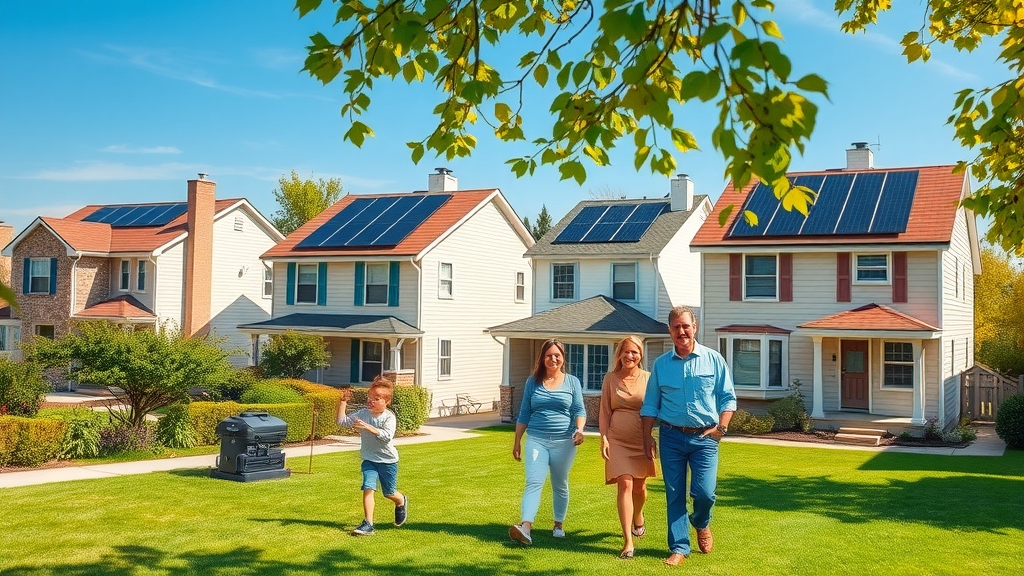
The modern solar panel revolution is changing more than just how we produce electricity—it’s redefining how Americans think about energy independence. Statistics show exponential adoption, with millions of homes now relying on solar energy for daily needs. Such mass acceptance is driven not just by an interest in renewable energy, but also by rapidly decreasing installation costs and an increase in the quality and reliability of residential solar solutions. This shift positions solar panels as an increasingly attractive investment for anyone looking to save money, reduce carbon footprint, and gain greater control over their household energy costs.
For homeowners wavering on the decision, the facts are compelling: dramatic price reductions, greater accessibility through various solar kit options, and constant technological innovation. Home solar is no longer a rare luxury; it’s a mainstream, practical solution generating real-world savings each month and significantly lower electric bills, even for larger homes with high energy requirements. As you read on, you’ll discover not just the mechanics behind this breakthrough, but also the tangible financial and environmental advantages that make residential solar the energy solution many have been waiting for.
If you're interested in expanding your solar capabilities beyond the main home, consider how a dedicated solar shed can provide off-grid power and storage for tools, hobbies, or even remote workspaces. Explore practical steps and design ideas in the ultimate guide to building your own solar shed for off-grid power .
What You'll Gain from This Solar Panels Review
- Understand the latest advancements in solar panel technology
- Learn how solar panels impact your electricity bills and the environment
- Explore real-world comparisons of the best solar kits and residential solutions
- Get answers to pressing questions about solar installation and costs
Solar Panels and Home Solar: The Ultimate Guide to Adoption
How Solar Panels Power Your Home: Solar Panel System Explained
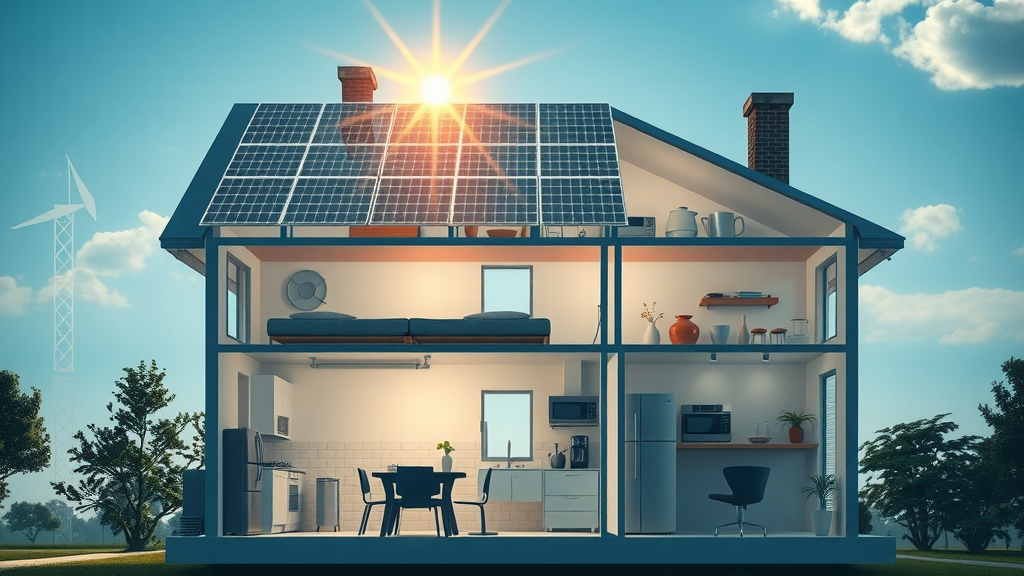
At the core of every home solar solution is a solar panel system —a network of photovoltaic modules that convert sunlight to usable electricity. Photons from the sun strike the solar cells embedded in the panels, generating direct current (DC) energy. This energy is then sent to an inverter, which switches it to alternating current (AC), allowing it to power everyday appliances, lighting, and devices within your home. With smart meters and monitoring systems, homeowners gain real-time insight into each kilowatt-hour produced, meaning you can track performance, maximize efficiency, and even send excess energy back to the grid via net metering, depending on your utility regulations.
Typical residential solar panel installations are designed for both reliability and flexibility, offering tailored outputs based on your unique consumption needs and the facing roof direction. Modern solar kits and custom systems can be scaled up or down, incorporating energy storage solutions like batteries for backup power during outages. These advances ensure that, whether adopting a full PV system or modular solar kit, homeowners can trust in consistent solar power delivery—aligned with both budget and energy independence goals.
Why does this matter? Unlike traditional fossil fuel-based electricity, home solar is a silent, low-maintenance technology with minimal environmental impact. That’s why a residential solar panel system is valued not just for its immediate cost savings, but also for its long-term sustainability and resilience in the face of rising electricity prices.
Key Features of Modern Solar Panels and Solar Cells
Today’s solar panels are engineered for performance, longevity, and style. The latest iterations incorporate highly efficient monocrystalline or polycrystalline solar cells , optimized for converting more sunlight into electricity, even in less-than-ideal conditions. Enhanced panel coatings reduce reflective losses, while modern frames resist corrosion and endure harsh weather, extending the life expectancy of a typical home solar panel beyond 25-30 years.
Innovations such as bifacial panels (capturing sunlight from both sides) and integrated solar kit battery storage are gaining traction, enabling even more flexible, all-in-one energy solutions for residential users. High-efficiency cell technology means greater output per square foot—crucial for homes with limited roof space. Digital monitoring, Wi-Fi connected inverters, and real-time maintenance alerts further ensure homeowners get the most out of their solar panel systems without technical hassle.
When shopping for home solar solutions, prioritize panels with robust warranties, industry certifications, and proven performance track records. The ability to scale your system—starting with a basic solar kit and expanding as your needs grow—can also be a game changer, making solar adoption approachable for a variety of budgets and property types.
All told, the new breed of residential solar panels combines smart design, durable materials, and advanced electronics. For anyone considering the leap, these features mean peace of mind, energy security, and genuine sustainability.
Choosing Between Solar Kit and Full Solar System
- Comparison of solar kits vs. custom residential solar installation
Prospective solar adopters today can choose between a standalone solar kit —a bundled DIY-friendly package including panels, inverters, wiring, and sometimes even battery storage—or a fully custom solar panel system designed and installed by professionals. A solar kit is often ideal for budget-conscious homeowners, off-grid cabins, or those wanting to power a garage, RV, or smaller property space. These kits are modular, quick to deploy, and can be expanded as needs evolve.
A full home solar installation , by contrast, allows for system customization based on your unique energy use, roof design, location, and aspirations for future expansion or energy independence. This route offers the highest performance and longest warranties, with professional project management ensuring that system sizing, panel placement, permits, and code compliance are all handled with expertise.
Ultimately, the decision comes down to property goals, initial budget, and the level of user involvement desired. Either way, both approaches access the same fundamental home solar technology and help pave your way to lower energy costs and a more resilient home energy infrastructure.
Benefits of Solar Panels: Why Homeowners Are Making the Switch
Slashing Your Electricity Bill with Home Solar

One of the most motivating reasons homeowners switch to solar panels is the immediate and ongoing reduction in electricity bills . By generating your own solar power, you minimize reliance on utility companies and hedge against rising grid rates. From day one, every kilowatt-hour produced is a kilowatt-hour you don’t have to buy, which adds up quickly—especially in high-usage months or regions with above-average electricity price s.
Many users report savings of 50-80% on their monthly electric bill , and some even achieve net-zero energy use due to net metering, where excess power is sent to the grid in exchange for bill credits. For households upgrading to a high-capacity solar kit or modern solar panel system with battery storage, energy generated during sunny periods can be stored for use at night or during utility rate spikes, further amplifying financial returns.
It’s not just anecdotal: Residential solar PV systems pay for themselves in as little as 5-8 years, often quicker with local and federal incentives. Those instant, visible savings are why so many homeowners view home solar as an investment with immediate and long-lasting payoff.
Solar Energy and Environmental Impact
Beyond cost savings, home solar directly supports the move toward genuine clean energy and a healthier planet. Each residential solar panel array helps reduce greenhouse gas emissions by displacing fossil-fuel-powered electricity with renewable energy. Over a typical 25-year system lifespan, an average solar PV installation prevents tons of CO2 from entering the atmosphere—an effect equivalent to planting thousands of trees.
Solar panels require no fuel, run silently, and won’t pollute air or water. Widespread residential solar adoption reduces dependence on centralized, carbon-intensive power plants. Homeowners embracing solar thus play a significant part in building a brighter, more sustainable energy future.
Choosing a solar kit or full panel system isn’t just a financial decision—it’s an actionable step toward energy independence, environmental responsibility, and community resilience in response to climate change.
Increase in Property Value with Residential Solar Panel Installation
The advantages of residential solar panel installation extend well beyond utility costs and green credentials. Recent studies confirm that homes with solar panel systems sell faster—and often for more—than comparable non-solar properties. Generated savings, warranty transfers, and installed energy infrastructure all add marketable value when it’s time to move, ensuring the investment holds its worth over the long term.
Appraisers and realtors now understand to factor in the presence of a residential solar system, especially when the system is owned outright. For buyers, a turn-key solar solution represents a move-in-ready path to financial and environmental benefits, while sellers enjoy stronger negotiating power and increased return on home improvement efforts.
Top Residential Solar Kits and Solar Panel Systems Reviewed
Comprehensive Comparison Table of Leading Solar Kits
| Model | Output (kW) | Price | Warranty | User Reviews |
|---|---|---|---|---|
| SunPower Equinox Full System | 8.2 | $18,500 | 25 years | ★★★★★ |
| Renogy 10kW DIY Solar Kit | 10.0 | $10,800 | 10 years | ★★★★☆ |
| LG NeON R Panel System | 7.5 | $15,600 | 25 years | ★★★★★ |
| EcoFlow Power Kit Bundle | 5.0 | $6,200 | 12 years | ★★★★☆ |
Best-in-Class Solar Panels: Standout Features
What sets the leading solar panels and kits apart isn’t just output, but overall quality and integration. Best-in-class models from brands like SunPower and LG use ultra-high-efficiency solar cells for maximum output, especially beneficial in areas with restricted roof space. Durable frames, comprehensive panel system warranties, and seamless integration with home energy management tools ensure hassle-free operation and peace of mind. Modern solar kits are now designed to be “plug and play,” taking much of the guesswork out of residential solar adoption.
Essential features to prioritize include long-term performance guarantees, flexible energy storage and battery options, and compatibility with current and future smart home upgrades. User reviews consistently highlight ease of installation, clear system monitoring, and tangible monthly savings as hallmarks of top-rated home solar systems.
Is a Turnkey Solar Kit Right for Your Home Solar Needs?
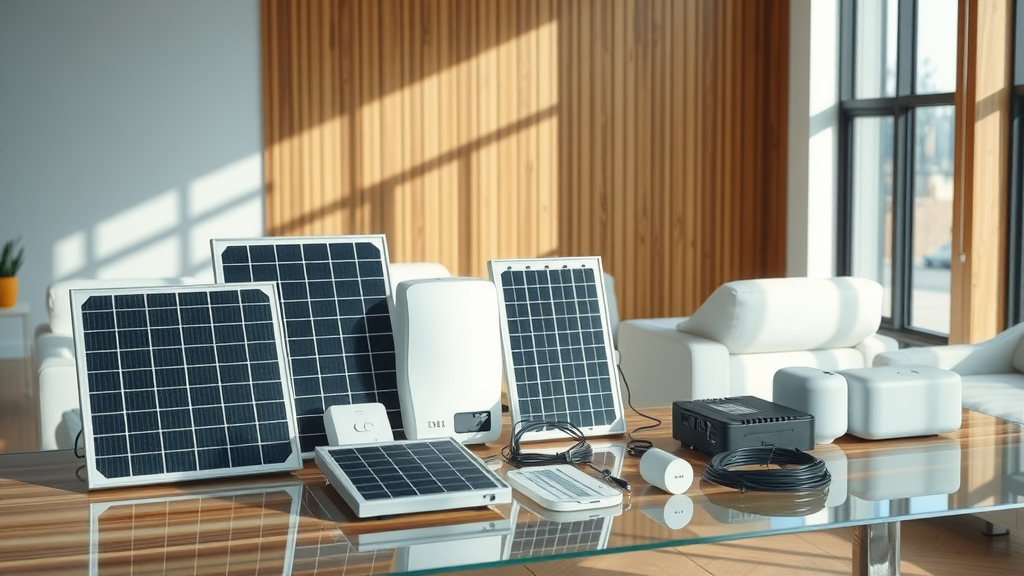
A turnkey solar kit is designed to simplify the process of going solar, particularly for those looking to avoid lengthy consultations and custom engineering. Pre-packaged with all essential hardware and straightforward instructions, these kits allow motivated homeowners to install solar panels quickly, sometimes even DIY-style. This approach can offer substantial upfront cost savings and quicker deployment, though it may not be suitable for homes with complex roof shapes or specialized energy needs.
However, if your goal is maximum efficiency, best aesthetics, or future-proofing your home for electric vehicles and advanced home automation, a professionally-tailored solar panel system may be a better fit. Weigh your home’s unique needs, budget, and comfort level with DIY installation to make the optimal choice between a solar kit and a fully customized home solar system.
Understanding Solar Installation: What Homeowners Should Expect
Solar Installation Steps: From Consultation to Power-Up
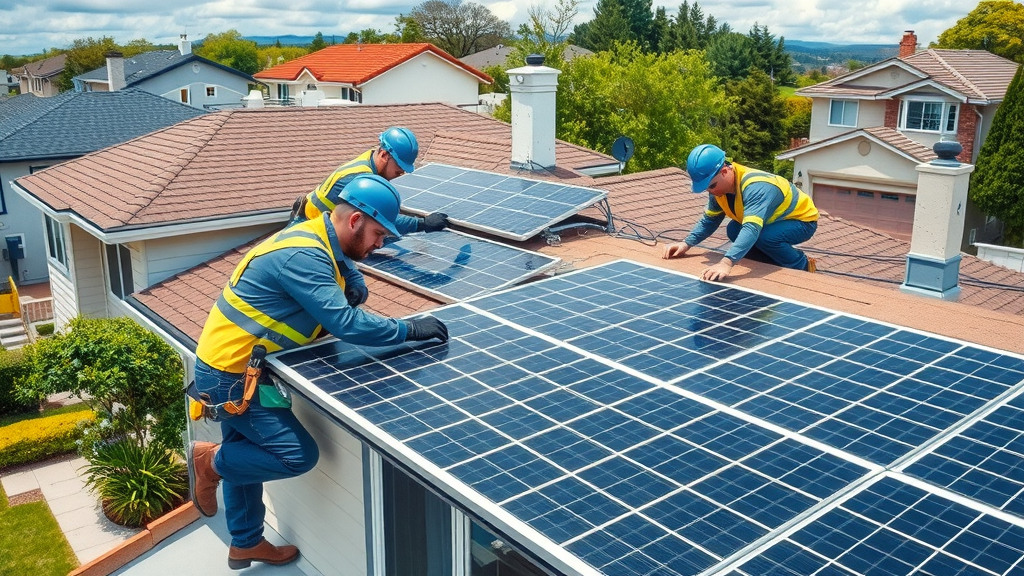
The solar installation process for a new solar panel system is remarkably streamlined but highly orchestrated. It usually begins with a home energy audit—evaluating historic energy usage, roof orientation, and potential shading. Next, an engineering team designs a system tailored to your zip code ’s sunlight hours, local incentives, and home architecture. The physical installation—the mounting of panels, inverters, and energy meters—rarely takes more than a few days, and professional crews work to minimize disruption and safeguard your property.
After system setup, local inspectors and utility providers verify final code compliance before your solar array is switched on. Many reputable installers also provide walk-throughs and digital monitoring systems, ensuring homeowners know exactly how to track performance and maximize savings from day one. This step-by-step approach ensures that—from timeline to technology—you get the reliability, safety, and support needed for a seamless transition to solar.
Support does not end on installation day. Modern solar companies offer ongoing service, remote monitoring, and technical support, ensuring your investment keeps delivering optimal results year after year.
Solar Solar Panel System Warranties and Service
Warranty coverage is a core part of your solar panel system investment. Top-tier solar manufacturers typically back their panels with 20-25 year product and performance guarantees and provide separate warranties for inverters and mounting hardware. Comprehensive coverage ensures protection against defects, premature aging, and power degradation, providing added peace of mind and reinforcing property value.
Beyond standard warranties, leading providers include service contracts, which offer annual inspection, cleaning, and priority repair. When considering a solar kit or a fully custom system, always confirm what’s included in your warranty and what options exist for extending service. Responsive after-sales support often proves invaluable for new home solar owners, helping navigate both expected and unexpected maintenance scenarios.
Quotes from Recent Residential Solar Customers
“Our electricity bill dropped by 80% after installing a solar kit. We only wish we’d switched to solar panels sooner.”
“The upfront cost was offset in less than five years thanks to our home solar installation savings.”
Costs and Incentives: Breaking Down Solar Panels Pricing
Upfront and Long-Term Costs with Solar Panel System
The total price of a home solar panel system varies by system size, local labor rates, product quality, and any optional battery storage. On average, residential solar panel system installs range from $12,000 for a modest solar kit to $25,000 or more for premium solutions, before incentives. While this may seem like a considerable sum, bear in mind that financing, leasing, and power purchase agreements can greatly reduce upfront expenses—enabling instant solar access for more homeowners.
The long-term economics are even more enticing: Most systems pay for themselves in a decade or less, then generate “free” energy for 15+ additional years. Monthly financing payments are often less than previous electricity bills, meaning families enjoy positive cash flow almost immediately. Add battery storage or smart home integration, and savings only increase—protecting you against future volatility in electricity prices.
Federal, State, and Local Incentives for Home Solar
Attractive government incentives are accelerating the transition to solar power nationwide. Federal tax credits allow homeowners to deduct up to 30% of their system costs, while several states and local municipalities offer additional rebates, no-interest loans, or even expedited permitting for solar installations. Some areas boast lucrative net metering programs or solar renewable energy certificates (SRECs), allowing you to earn ongoing returns for clean energy provided back to the grid.
These incentives, stacked together, often slash thousands off the initial investment and can speed up your solar payback period to just a few years. With a brief search for programs available in your zip code , you’ll discover powerful financial motivators for making the switch—making solar panels a more affordable and appealing investment than ever before.
People Also Ask: Answers to Common Solar Panels Questions
How many solar panels are needed to run a house?
- Most homes require 15-25 solar panels depending on annual energy usage, panel efficiency, and sunlight exposure; factors vary by location and family habits.
For a typical U.S. residence, a complete solar panel system might include between 15 and 25 high-efficiency panels. The “right” number is influenced by your annual energy consumption, roof orientation, shade, and the wattage rating of each panel. Solar consultants use detailed site analysis, sometimes even drone surveys, to provide a tailored design based on your average usage and physical roof space. Local solar experts can run these calculations using your historical electricity bills and help configure a system for maximum ROI.
What is the downside of solar panels on a house?
- Key downsides include high initial investment, variable energy production based on weather, and potential roof compatibility issues.
While modern solar panels are highly reliable, some downsides persist. Initial installation costs can be substantial, though incentives now mitigate much of this expense. Solar efficiency is also dependent on weather—output diminishes during cloudy days, snow cover, or in shaded locations. Some roof types (like slate or wood shake) may complicate mounting, and older roofs may require reinforcement or replacement before installing a new solar kit or system. Despite these hurdles, the benefits outweigh the drawbacks for the vast majority of American homes.
What is the 20% rule for solar panels?
- The 20% rule advises keeping at least 20% of your roof area free of solar panels for maintenance access and safety compliance.
The so-called 20% rule is a best practice that helps ensure safe system maintenance and compliance with fire codes. By leaving 20% of your roof area clear (often near edges or roof ridges), you allow access for repairs, inspections, or emergency responders. Solar installers will help optimize panel layout to balance power generation with access requirements, maximizing both system size and safety for your panel system .
Can I run AC with a solar panel?
- Yes, with a sufficiently sized solar panel system or solar kit, AC units can be powered; sizing and battery support are crucial for reliability.
Absolutely. Many households power their air conditioning with solar—provided their solar panel system is correctly sized for the additional load. High-capacity solar kits or home solar arrays with battery storage produce and store enough energy to run multiple appliances, including demanding ones like AC units. Your solar installer can size a PV system that matches total home energy usage—ensuring cool comfort by day, without relying fully on grid power during peak summer periods.

Expert Insights on Solar Cells and Future Technology
Next-Gen Solar Panels: Ultra-Efficient Solar Cells
The future of solar panels lies in ultra-efficient solar cell technologies, such as perovskite cells, bifacial modules, and advanced thin-film. These cutting-edge innovations promise even higher power densities, flexibility for unique roof shapes, and increased output in various light conditions—including overcast days and partial shade. A new generation of panels means modern home solar systems will require fewer modules to yield the same output, lowering installation costs and expanding viable property options nationwide.
Solar researchers continue to push conversion efficiencies beyond 25%, while advances in smart micro-inverters, storage batteries, and real-time monitoring apps make the future of residential solar systems more user-friendly and productive. Today’s investment in solar is also an investment in tomorrow’s even better clean energy technology.
Are Solar Panels the Breakthrough for Clean Energy?
As the reliability, affordability, and efficiency of solar panels improves, home solar is quickly becoming the cornerstone of America’s transition to clean energy . Solar’s breakthrough isn’t just technological; it’s economic and environmental, empowering millions of homeowners to take charge of their energy destiny while directly addressing climate change. If you’re waiting for a sign that it’s time to invest in the future of home energy—this is it.
Practical Tips to Maximize Home Solar Panel System Performance
- Proper panel placement and maintenance
- Solar kit upgrades for higher efficiency
- Monitoring solar power output and usage trends
To achieve optimal returns from your solar panel system , focus on several key practices. First, work with your installer to ensure panels are positioned for maximum sun exposure—typically facing south with minimal obstructions. Keep panels clean and free from debris; occasional rinsing is usually sufficient, but yearly professional inspections can catch issues early. Consider upgrading your solar kit as new, more efficient modules become available, and leverage smart monitoring platforms to keep tabs on output and spot anomalies.
Tracking energy trends allows you to adjust consumption habits and identify the best times for big power draws (like laundry or EV charging). Battery add-ons can further improve savings, capturing excess energy for overnight use or during grid outages. Consistent attention to your system’s layout, health, and usage patterns will reward you with years of cost savings and worry-free green energy.
Frequently Asked Questions About Solar Panels
Do solar panels work during cloudy days or at night?
While solar panels are most productive under direct sunlight, they still generate electricity on cloudy days—just at a reduced rate (often 10-25% of peak capacity). At night, production halts, but homes with energy storage systems can draw on solar-charged batteries to power evening activities. Those using grid-connected systems will draw standard electricity overnight, offset by surplus solar credits earned during the day.
How long do home solar panels last?
Most home solar panel systems are designed to last 25-30 years with minimal degradation (less than 1% performance drop per year). Leading manufacturers offer 25-year or longer warranties, ensuring predictable returns for decades. Routine checks and basic cleaning help extend system life farther, with many panels remaining functional—and economically valuable—well after their official warranty expires.
What maintenance is involved for solar panels and solar kits?
Maintenance for solar panels is straightforward: keep them clear of leaves, bird droppings, or heavy snow, and consider annual professional inspections. Most modern solar kits are designed with low-maintenance materials and include self-diagnostic monitoring for peace of mind. Occasionally, inverter or battery components may require service or firmware updates—covered by included warranties for reputable brands.
Are solar panels suitable for every roof type?
Most roof types—including asphalt shingle, metal, and tile—are compatible with solar panels . Certain materials (like slate or heavily shaded flat roofs) may pose challenges, but experienced installers can recommend custom mounting or ground-mount solutions. Even if your roof isn’t ideal, creative approaches can make solar viable for the vast majority of American homeowners.
Quick Recap: Key Points on Solar Panels for Homeowners
- Solar panels reduce energy bills, increase property value, and advance energy independence
- Both residential solar kits and custom solar panel system options are more affordable than ever
- Federal and local incentives make now a prime time to invest in solar
Ready to Switch to Solar Panels? Explore Your Options & Begin Your Solar Journey Today
- Compare top solar panel systems and solar kits now, schedule a home assessment, and start saving on electricity bills with reliable residential solar solutions
Take action: Evaluate your energy needs, compare the latest solar kits and custom systems, and schedule a professional assessment. With today’s incentives, there’s never been a better—and more affordable—time to power your home with solar panels.
As you consider the leap into solar, remember that true energy independence often goes hand-in-hand with a holistic approach to sustainable living. If you're inspired to take your home’s efficiency and resilience even further, discover how to create a self-sufficient home that integrates renewable energy, water conservation, and smart resource management. Uncover practical strategies and advanced tips in this comprehensive guide to independent living . By combining solar power with other eco-friendly upgrades, you can future-proof your property, reduce your environmental impact, and enjoy the peace of mind that comes from true self-reliance.
Solar panels offer a multitude of benefits, making them an increasingly popular choice for homeowners seeking energy independence and environmental sustainability.
Cost Savings
By generating your own electricity, solar panels can significantly reduce or even eliminate your utility expenses. This energy independence shields you from rising electricity rates, leading to substantial savings over time. Additionally, federal incentives and grant programs can shorten the return on investment for solar installations. ( solaralliance.com )
Environmental Sustainability
Solar energy is a clean, renewable resource that dramatically reduces your household’s carbon footprint. Unlike traditional energy sources such as coal and natural gas, solar power doesn’t release harmful greenhouse gases or pollutants into the atmosphere. By adopting solar, you contribute to global efforts in combating climate change and protecting ecosystems. ( ea-global.us )
Reliability and Low Maintenance
Modern solar panels are designed for durability and require minimal maintenance. They typically come with warranties of at least 25 years and are built to withstand various weather conditions. This ensures a reliable and long-lasting energy solution for your home. ( solaralliance.com )
Increased Property Value
Installing a solar panel system can increase your home’s value by about 4%. Even if you’re not in your forever home, you could earn back your solar panel investment and then some when you sell your house. ( energysage.com )
Energy Independence
Utilizing solar power enhances national and regional energy independence, reducing reliance on imported fuels. This independence is vital for maintaining stability, especially during geopolitical tensions that can disrupt energy supplies. Homeowners can produce their own energy, reducing vulnerability to market fluctuations or supply interruptions. ( nenpower.com )
In summary, solar panels provide significant financial savings, environmental benefits, and energy security, making them a worthwhile investment for homeowners.
 Add Row
Add Row  Add
Add 

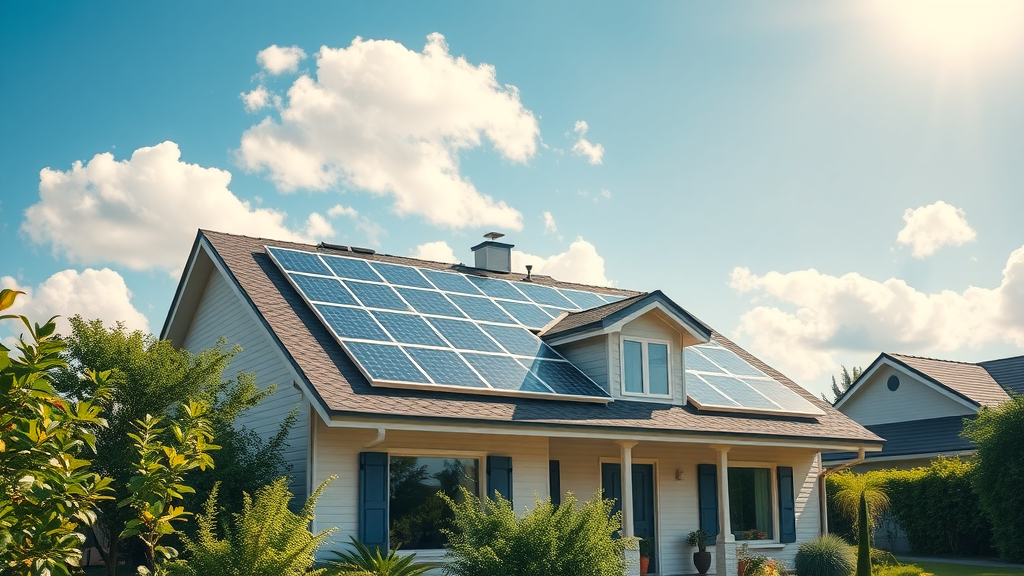


Write A Comment